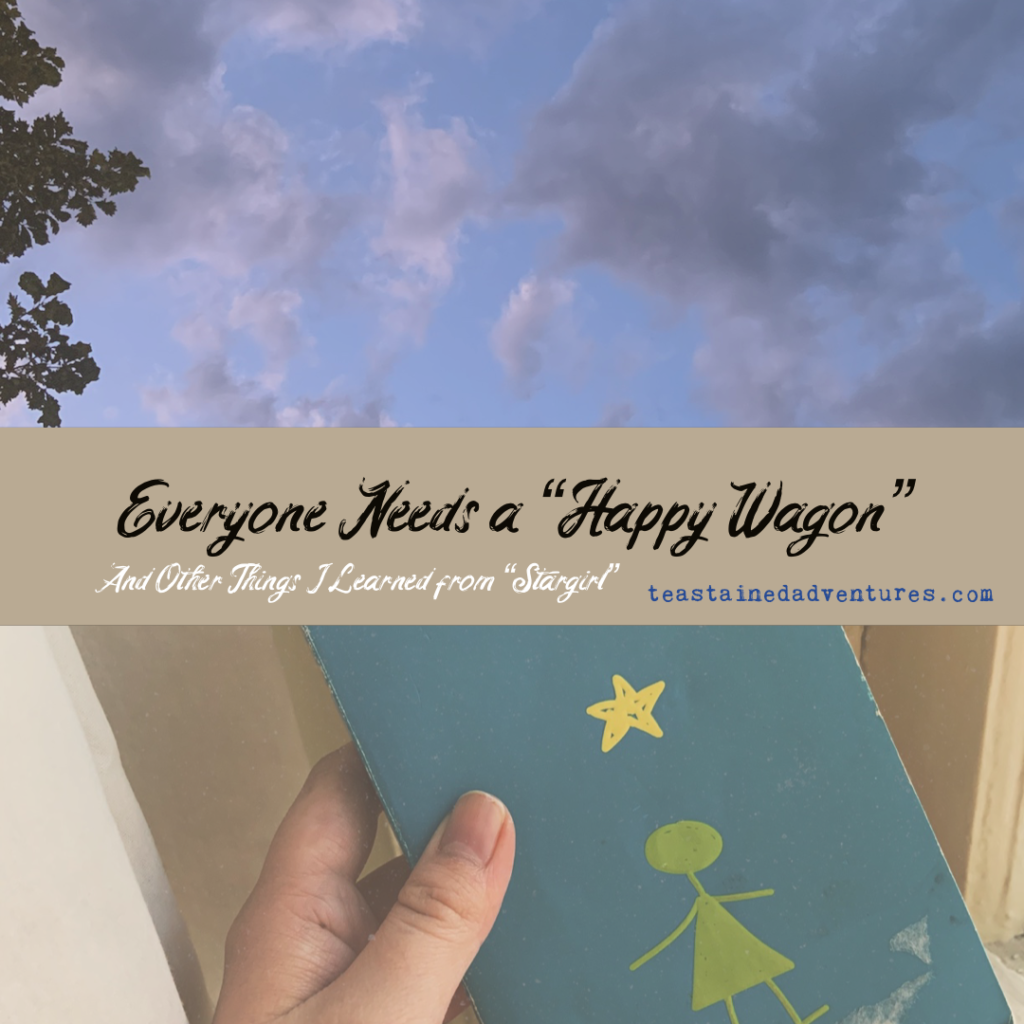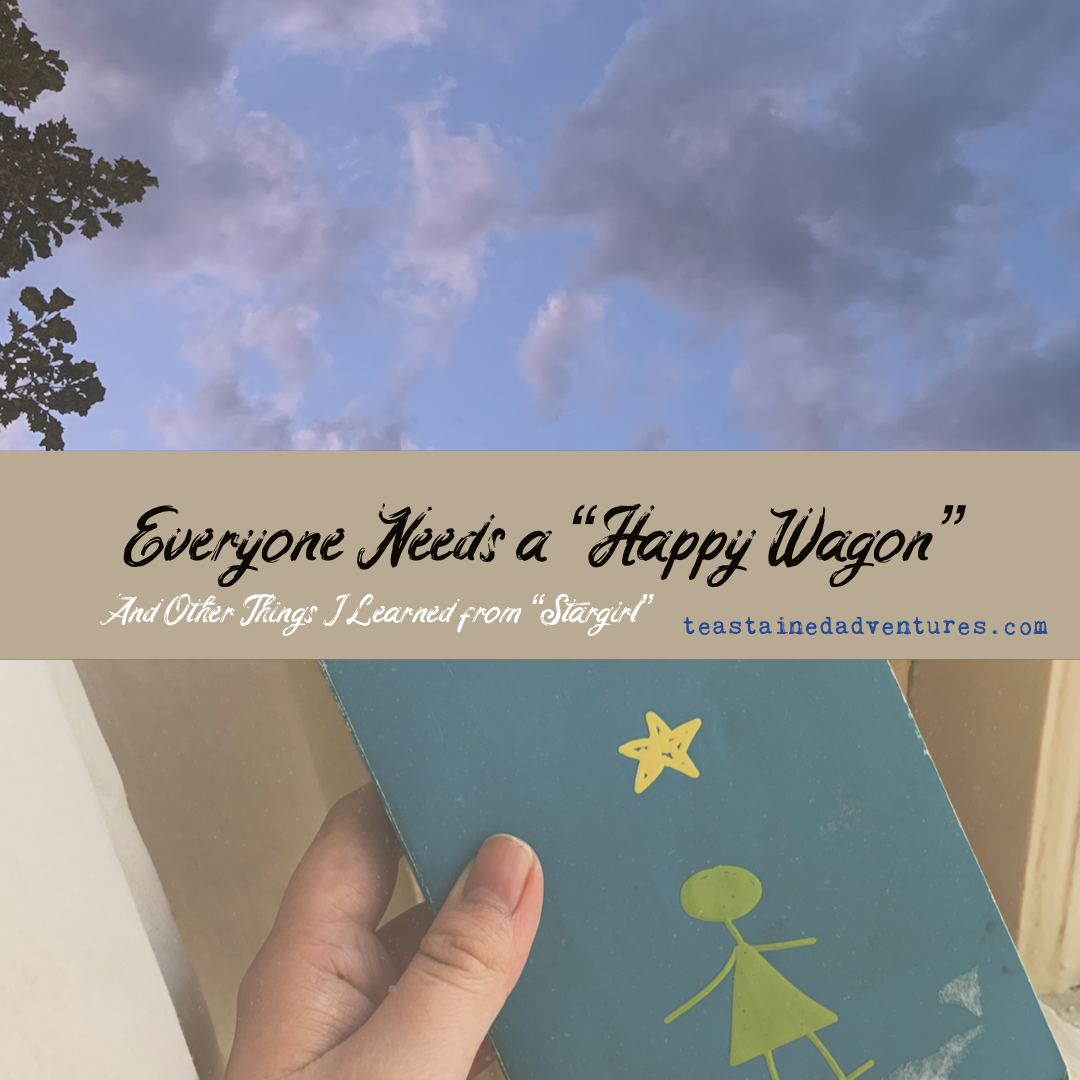
I’m not a natural optimist. I’m someone who needs to train myself to see the glass half-full. The emptiness lingering on the other side of the glass can swallow me up, and I need to fix my thoughts forward to make sure that doesn’t happen.
If there’s one book that helps me learn to be optimistic, it’s Stargirl by Jerry Spinelli. For those who haven’t read it, here’s the description provided on Goodreads.
“Leo Borlock follows the unspoken rule at Mica Area High School: don’t stand out–under any circumstances! Then Stargirl arrives at Mica High and everything changes–for Leo and for the entire school. After 15 years of home schooling, Stargirl bursts into tenth grade in an explosion of color and a clatter of ukulele music, enchanting the Mica student body.
But the delicate scales of popularity suddenly shift, and Stargirl is shunned for everything that makes her different. Somewhere in the midst of Stargirl’s arrival and rise and fall, normal Leo Borlock has tumbled into love with her.*
In a celebration of nonconformity, Jerry Spinelli weaves a tense, emotional tale about the fleeting, cruel nature of popularity–and the thrill and inspiration of first love.”
The book is sweet and left a beautiful story lingering on my tastebuds. It’s title character—Stargirl—is the master of non-conformity. She doesn’t build herself around what others think is “cool.” She’s kind and caring in the way that looks out for the good in others, but rejects their ill-intended expectations.
Ironically, she’s someone I strive to be like. She stays optimistic, allowing herself to shamelessly express the positive and creative facets of her personality.
If there’s one thing I wish the recent Disney Plus adaptation didn’t leave out, it’s the little scenes that display how Stargirl expresses those things. She leaves pennies on the ground for others to pick up. She writes caring notes to people whose loved ones were listed on the newspaper obituaries.
And the Happy Wagon. A quirk and habit of hers that I’ve since decided to try out. To explain the concept of Stargirl’s “Happy Wagon,” here’s a quote from the novel:
“It’s my happy wagon,” she said. “Actually, it could just as well be called an unhappy wagon, but I prefer happy wagon.”
“So what’s it all about?”
“It’s about how I feel. When something makes me happy, I put a pebble in the wagon. If I’m unhappy, I take a pebble out. There are twenty pebbles in all.”
I counted three on the shelf. “So there’s seventeen in the wagon now, right?”
“Right.”
“So that means, what, you’re pretty happy?”
“Right again.”
“What’s the biggest number of pebbles in the wagon?”
She gave me a sly smile. “You’re looking at it.”
Every time she’s happy, she puts a pebble on the wagon. Every time she’s sad, she takes one off.
I wonder if Stargirl is like me—someone who isn’t naturally optimistic. She’s optimistic because she trains herself to be. When there are less rocks on the wagon, she wishes for more, and therefore longs for a smile. When there are more rocks on the wagon, it helps her be grateful for the load of happy times she did have.
So even if times are bad, it’ll work. There are darker days, but optimism isn’t the opposite of depression. It’s okay to have less rocks on a wagon—that’s not the point. The point is hopefulness, even through sorrow. And hope is not the opposite of being realistic. The belief that it is, is, in fact, unrealistic.
A small opinion I’ve come to acquire is that everyone should own a happy wagon. It doesn’t have to be pebbles on a wagon. For me, I put paperclips on a string. Or it could be beads on a necklace. Or tally marks on a whiteboard.
Learning to grasp hope is a virtue—and sometimes takes practice. So, whoever you are…bring out your wagon.
Keep Wandering,


